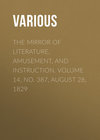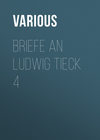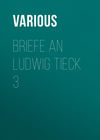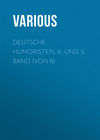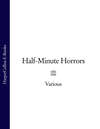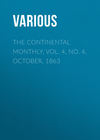Buch lesen: «The Mirror of Literature, Amusement, and Instruction. Volume 14, No. 387, August 28, 1829», Seite 2
TWO SONNETS
To M– F–
(For the Mirror.)
I
I met thee, –, when the leaves were green
And living verdure clothed the countless trees
When meadow flowers allured the summer bees
And silvery skies shone o'er the cloudless scene
Bright as my thoughts when wand'ring to thy home
Where Nature looks as though she were divine
Not in the richness of the rip'ning vine
Not in the splendour of imperial Rome.
It is a ruder scene of rocks and trees
Where even barrenness is beauty—where
The glassy lake, below the mountain bare
Curls up its waters 'neath the casual breeze
And, 'midst the plenitude of flower and bud
Sweet violets hide them in the hilly wood.
II
I parted with thee one autumnal day
When o'er the woods the northern tempest beat—
The spoils of autumn rustling at our feet
And Nature wept to see her own decay.
The pliant poplar bent beneath the blast
The moveless oak stood warring with the storm
Which bow'd the pensive willow's weaker form
And naught gave token that thy love would last
Save the mute eloquence of forcing tears
Save the low pleading of thy ardent sighs
The fervent gazing of thy glowing eyes
A firm assurance, spite of all my fears
That, as the sunshine dries the summer rain
Thy future smile should bless for parting pain.
* * H.
ILLUSTRATION OF SOME OLD PROVERBS, &c
(For the Mirror.)
"Ax." To ask. This word which now passes for a mere vulgarism, is the original Saxon form, and used by Chaucer and others. See "Tyrwhitt's Glossary." We find it also in Bishop Bale's "God's Promises." "That their synne vengeaunce axed continually." Old Plays. i. 18. Also in the "Four P.'s," by Heywood, "And axed them thys question than." Old Pl. i. 84. An axing is used by Chaucer for a request. Ben Jonson introduces it jocularly:
"A man out of wax,
As a lady would ax."
Masques, vol. 6, p. 85.
"Between the Cup and the Lip." The proverb that many things fall out between the cup and the lip, is a literal version of one in Latin. Multo inter pocula ac libra cadunt. The origin of which was as follows:—A king of Thrace had planted a vineyard, when one of his slaves, whom he had much oppressed in that very work, prophesied that he should never taste of the wine produced in it. The monarch disregarded the prediction, and when at an entertainment he held a glassful of his own wine made from the grape of that vineyard, he sent for the slave, and asked him what he thought of his prophecy now; to which the other replied, "Many things fall out between the cup and the lip," and he had scarcely delivered this singular response, before news was brought that a monstrous boar was laying waste the favourite vineyard. The king, in a rage, put down the cup which he held in his hand, and hurried out with his people to attack the boar; but being too eager, the boar rushed upon him and killed him, without having tasted of the wine. Such is the story related by some of the Greek writers, and though evidently apocryphal, it certainly is productive of a good practical moral.
"In the merry pin." This is said of those who have drunk freely and are cheerful in their cups. Among the ancient northern nations, it was customary to drink out of large horns, in which were placed small pins, like a scale of distances, and he who quaffed most was considered as a toper of the first magnitude, and respected accordingly. The merry pin was that which stood pretty far from the mouth of the horn, and he who, at a draught, reduced the liquor to that point, was a man of no ordinary prowess in bacchanalian contest.
"Under the Rose be it spoken." The rose being dedicated by Cupid to Harpocrates, the god of Silence, to engage him to conceal the amours of Venus, was an emblem of Silence; whence to present it or hold it up to any person in discourse, served instead of an admonition, that it was time for him to hold his peace; and in entertaining rooms it was customary to place a rose above the table, to signify that what was there spoken should be kept private. This practice is described by the following epigram:—
Est rosa flos, Veneris cujus quo facta laterunt,
Harpocrati matri dona dicavit Amor,
Inde rosam mensis hospes suspendit amicis
Convivii et sub ea dicta tacenda sciat.
Potter's Ant. Greece.
"Cant." This word, which is now generally applied to fanatical preachers, and hypocritical apprentices in religion, derives its name from two Scotch Presbyterian ministers, in the reign of Charles II. They were father and son, both called Andrew Cant; and Whitelocke in his "Memoirs," p. 511, after narrating the defeat at Worcester, in 1651, says, "Divers Scotch ministers were permitted to meet at Edinburgh, to keep a day of humiliation, as they pretended, for their too much compliance with the King," and in the same month when Lord Argyll had called a parliament, Mr. Andrew Cant, a minister, said in his pulpit, that "God was bound to hold this parliament, for that all other parliaments was called by man, but this was brought about by his own hand."
"An't please the Pigs." In this phrase there is not only a peculiarity of dialect, but the corruption of a word, and a change of one thing for another. In the first place, an, in the midland counties, is used for if; and pigs is evidently a corruption of Pyx, the sacred vessel containing the host in Roman Catholic countries. In the last place, the vessel is substituted for the power itself, by an easy metonymy in the same manner as when we talk of "the sense of the house," we do not mean to ascribe intelligence to a material building; but to the persons in it assembled for a deliberate purpose; the expression therefore signifies no more than "Deo volente," or God willing.
"Bumper." In many parts of England any thing large is called a bumper. Hence a bumping lass is a large girl of her age, and a bumpkin is a large-limbed, uncivilized rustic; the idea of grossness of size entering into the idea of a country bumpkin, as well as that of unpolished rudeness. Dr. Johnson, however, strangely enough deduces the word bumpkin from bump; but what if it should prove to be a corruption of bumbard, or bombard: in low Latin, bombardus, a great gun, and from thence applied to a large flagon, or full glass. Thus the Lord Chamberlain says to the porters who had been negligent in keeping out the mob.
"You are lazy knaves:
And here ye lie, baiting of bombard, when
Ye should do service."
Shaks. Hen. VIII. Act 5, Scene 3.
"Baiting of bombard" is a term for sitting and drinking, which Nash in his "Supplycacyon to the Deuyll," calls by the like metaphor, "bear baiting." So Shakspeare again in the "Tempest," says,
"Yond same black cloud, yond huge one,
Seems like foul bombard, that would shed his liquor."
Tempest, Act 2, Scene 2.
Which Theobald rightly explains thus: "A large vessel for holding drink, as well as the piece of ordinance so called."
"Latter Lammas." Lammas day is the first day of August, so called quasi, Lamb-mass, on which day the tenants that hold lands of the Cathedral of York, which is dedicated to St. Peter, ad Vincula, were bound by that tenure to bring a living lamb into the church at high mass.—Cornell's Interpreter. Lammas day was always a great day of account, for in the payment of rents our ancestors distributed the year into four quarters, ending at Candlemas, Whitsuntide, Lammas, and Martinmas, and this was as common as the present divisions of Lady day, Midsummer, Michaelmas, and Christmas. In regard to Lammas, in addition to its being one of the days of reckoning, it appears from the Confessor's laws, that it was the specific day whereon the Peter-pence, a tax very rigorously executed, and the punctual payment of which was enforced under a severe penalty, was paid. In this view then, Lammas stands as a day of account, and Latter Lammas will consequently signify the day of doom, which in effect, as to all payments of money, or worldly transactions in money, is never. Latter here is used for last, or the comparative for the superlative, just as it is in a like case in our version of the book of Job, "I know that my redeemer liveth, and that he shall stand at the latter day upon the earth," meaning of course the last day, or the end of the world. That the last day, or Latter Lammas, as to all temporal affairs is never, may be illustrated by the following story:—A man at confession owned his having stolen a sow and pigs; the father confessor exhorted him to make restitution. The penitent said some were sold, and some were killed, but the priest not satisfied with this excuse, told him they would appear against him at the day of judgment if he did not make restitution to the owner, upon which the man replied, "Well, I'll return them to him then."
"Lydford Law." In Devonshire and Cornwall this saying is common:
"First hang and draw,
Then hear the cause by Lydford Law."
Sometimes it is expressed in this manner; "Lydford Law, by which they hang men first, and try them afterwards." Lydford was formerly a town of note, but now an inconsiderable village on the borders of Dartmoor, not far from Tavistock. It is famous for a ruined castle, under which is a dungeon that used to be a prison for the confinement of persons who offended against the Stannary Courts of Tavistock, Ashburton, Chapford, and Plimpton. These Stannary Courts were erected by a charter of Edward III. for the purpose of regulating the affairs of the tin mines in Devonshire, and of determining causes among the tinners, whether criminal, or actions for debt. The proceedings were very summary, and the prison horribly offensive. Near Lydford is a famous waterfall, and a most romantic view down the river Lyd; over which is a curious bridge built with one arch. The parish is the largest in the kingdom, including the whole Forest of Dartmoor. William Browne of Tavistock, and the author of Britannia's Pastorals, gives a humorous description of Lydford in the reign of James I.
THE CONTEMPORARY TRAVELLER
JOURNEY IN SEARCH OF THE RED INDIANS OF NEWFOUNDLAND
In the island of Newfoundland, an institution has been formed for opening a communication with, and promoting the civilization of, the Red Indians; and procuring, if possible, an authentic history of that unhappy race of people, in order that their language, customs, and pursuits, may be contrasted with those of other tribes of Indians and nations. The interior of the island is less known than any other British possessions abroad; but, from the exertions of the above Society, more information has been collected concerning the natives, than has been obtained during the two centuries and a half in which Newfoundland has been in possession of Europeans. The last journey was undertaken by W.E. Cormack, Esq., president of the Society. His report has appeared in a recent Number of the Edinburgh New Philosophical Journal, and will, we are persuaded, be interesting to our readers:
"My party," says Mr. Cormack, "consisted of three Indians, whom I procured from among the other different tribes, viz. an intelligent and able man of the Abenakie tribe, from Canada; an elderly Mountaineer from Labrador; and an adventurous young Micmack, a native of this island, together with myself. It was my intention to have commenced our search at White Bay, which is nearer the northern extremity of the island than where we did, and to have travelled southward. But the weather not permitting to carry my party thither by water, after several days' delay, I unwillingly changed my line of route.
"On the 31st of October, 1828, last, we entered the country at the mouth of the River Exploits, on the north side, at what is called the Northern Arm. We took a north-westerly direction, to lead us to Hall's Bay, which place we reached through an almost uninterrupted forest, over a hilly country, in eight days. This tract comprehends the country interior from New Bay, Badger Bay, Seal Bay, &c.; these being minor bays, included in Green or Notre Dame Bay, at the north-east part of the island, and well known to have been always heretofore the summer residence of the Red Indians.
"On the fourth day after our departure, at the east end of Badger Bay-Great Lake, at a portage known by the name of the Indian Path, we found traces made by the Red Indians, evidently in the spring or summer of the preceding year. Their party had had two canoes; and here was a canoe-rest, on which the daubs of red ochre, and the roots of trees used to fasten or tie it together appeared fresh. A canoe-rest, is simply a few beams supported horizontally about five feet from the ground, by perpendicular posts. A party with two canoes, when descending from the interior to the sea-coast, through such a part of the country as this, where there are troublesome portages, leave one canoe resting, bottom up, on this kind of frame, to protect it from injury by the weather, until their return. Among other things which lay strewed about here, were a spearshaft, eight feet in length, recently made and ochred; parts of old canoes, fragments of their skin-dresses, &c. For some distance around, the trunks of many of the birch, and of that species of spruce pine called here the Var (Pinus balsamifera) had been rinded; these people using the inner part of the bark of that kind of tree for food. Some of the cuts in the trees with the axe, were evidently made the preceding year. Besides these, we were elated by other encouraging signs. The traces left by the Red Indians are so peculiar, that we were confident those we saw here were made by them.
"This spot has been a favourite place of settlement with these people. It is situated at the commencement of a portage, which forms a communication by a path between the sea-coast at Badger Bay, about eight miles to the north-east, and a chain of lakes extending westerly and southerly from hence, and discharging themselves by a rivulet into the River Exploits, about thirty miles from its mouth. A path also leads from this place to the lakes, near New Bay, to the eastward. Here are the remains of one of their villages, where the vestiges of eight or ten winter mamatecks, or wigwams, each intended to contain from six to eighteen or twenty people, are distinctly seen close together. Besides these, there are the remains of a number of summer wigwams. Every winter wigwam has close by it a small square-mouthed or oblong pit, dug into the earth, about four feet deep, to preserve their stores, &c. in. Some of these pits were lined with birch rind. We discovered also in this village the remains of a vapour-bath. The method used by the Boeothicks to raise the steam, was by pouring water on large stones made very hot for the purpose, in the open air, by burning a quantity of wood around them; after this process, the ashes were removed, and a hemispherical framework closely covered with skins, to exclude the external air, was fixed over the stones. The patient then crept in under the skins, taking with him a birch-rind bucket of water, and a small bark-dish to dip it out, which, by pouring on the stones, enabled him to raise the steam at pleasure.5
"At Hall's Bay we got no useful information, from the three (and the only) English families settled there. Indeed we could hardly have expected any; for these, and such people, have been the unchecked and ruthless destroyers of the tribe, the remnant of which we were in search of. After sleeping one night in a house, we again struck into the country to the westward.
"In five days we were on the high lands south of White Bay, and in sight of the high lands east of the Bay of Islands, on the west coast of Newfoundland. The country south and west of us was low and flat, consisting of marshes, extending in a southerly direction more than thirty miles. In this direction lies the famous Red Indians' Lake. It was now near the middle of November, and the winter had commenced pretty severely in the interior. The country was every where covered with snow, and, for some days past, we had walked over the small ponds on the ice. The summits of the hills on which we stood had snow on them, in some places, many feet deep. The deer were migrating from the rugged and dreary mountains in the north, to the low mossy barren, and more woody parts in the south; and we inferred, that if any of the Red Indians had been at White Bay during the past summer, they might be at that time stationed about the borders of the low tract of country before us, at the deer-passes, or were employed somewhere else in the interior, killing deer for winter provision. At these passes, which are particular places in the migration lines of path, such as the extreme ends of, and straights in, many of the large lakes—the foot of valleys between high and rugged mountains—fords in the large rivers, and the like–the Indians kill great numbers of deer with very little trouble, during their migrations. We looked out for two days from the summits of the hills adjacent, trying to discover the smoke from the camps of the Red Indians; but in vain. These hills command a very extensive view of the country in every direction.
